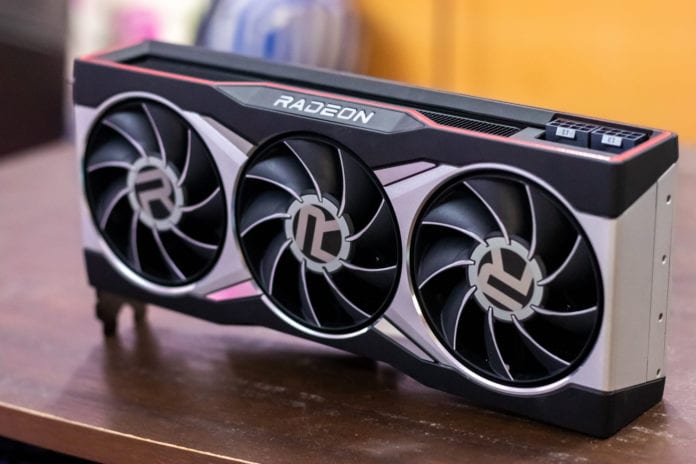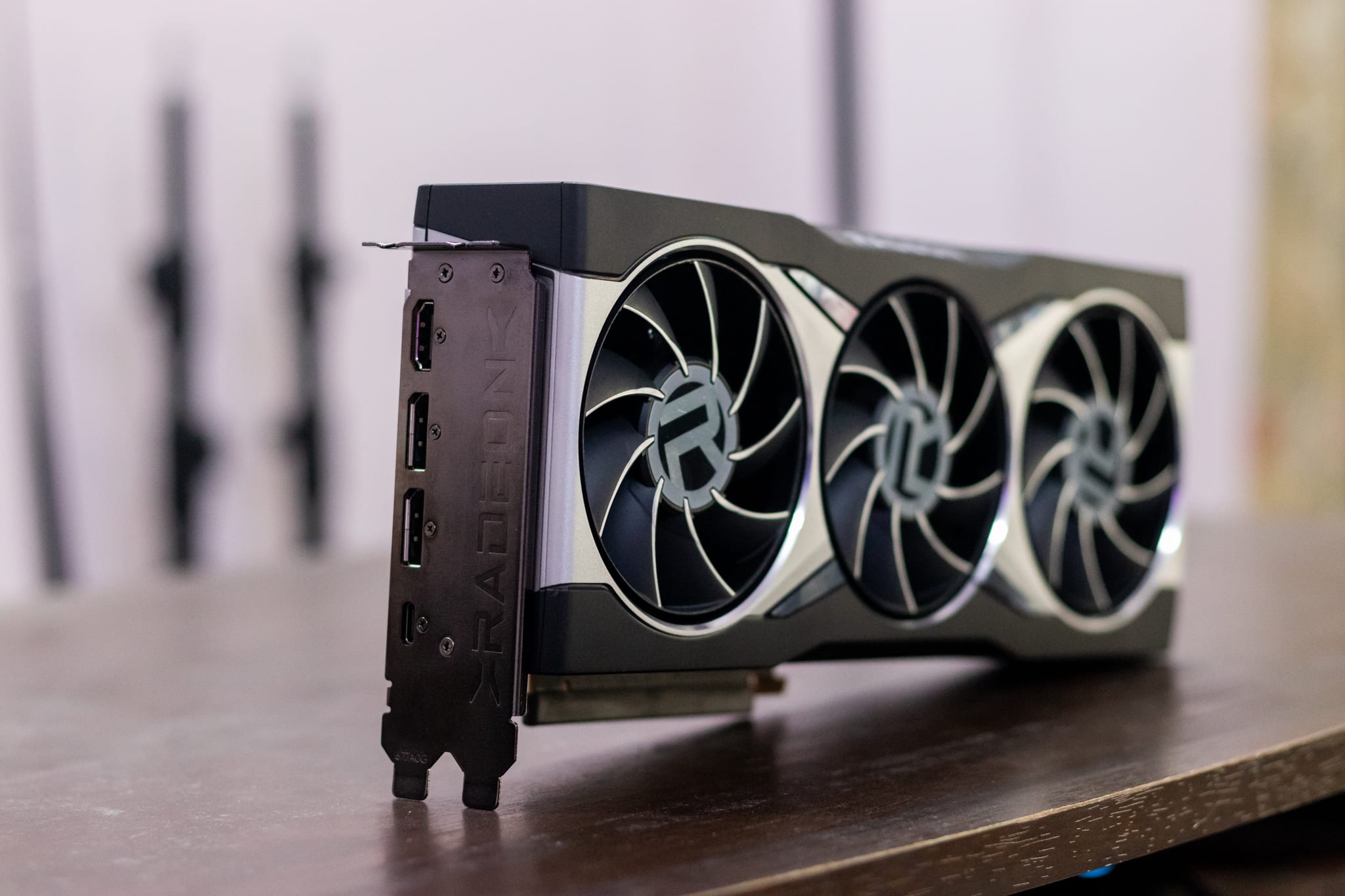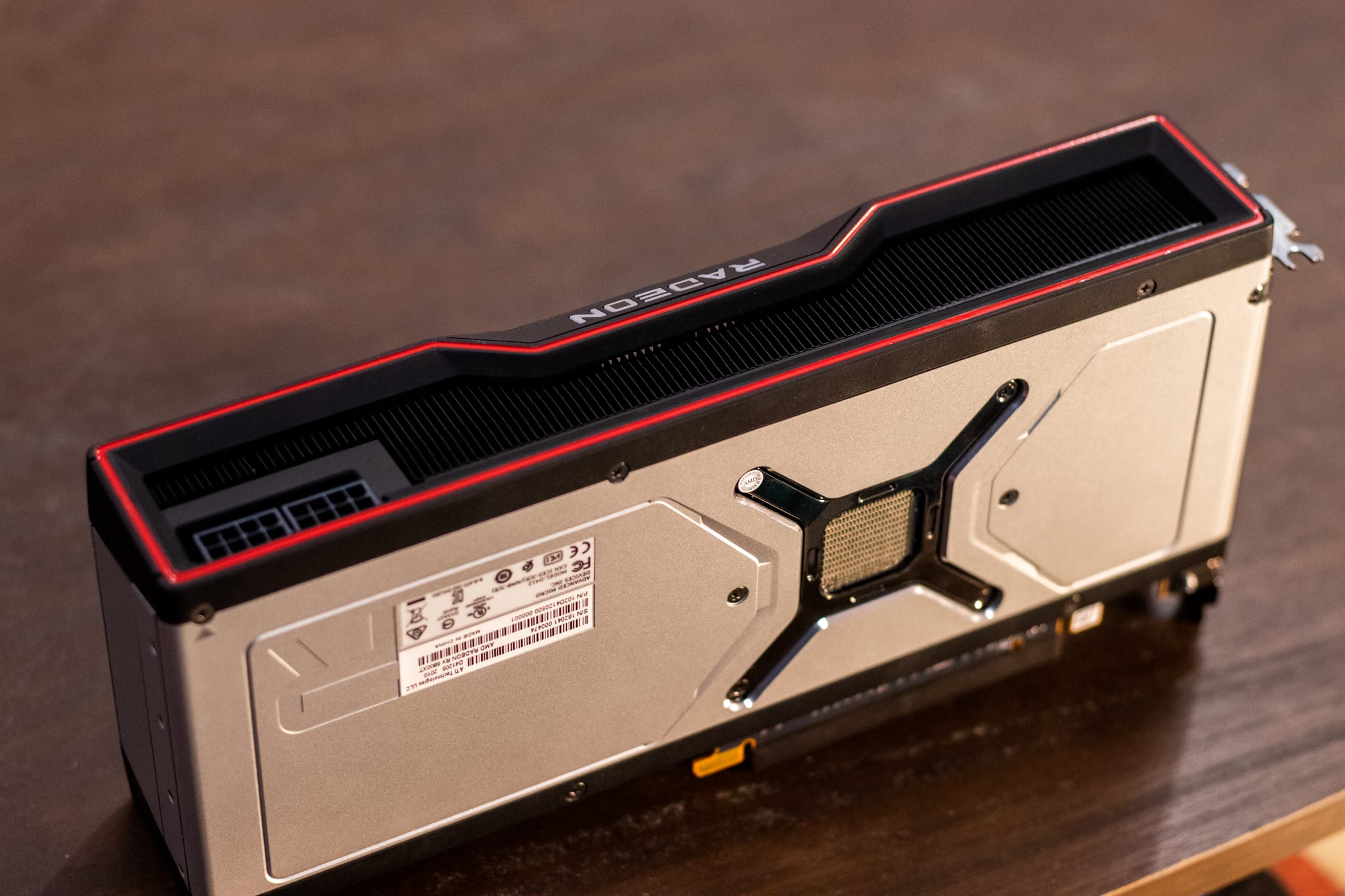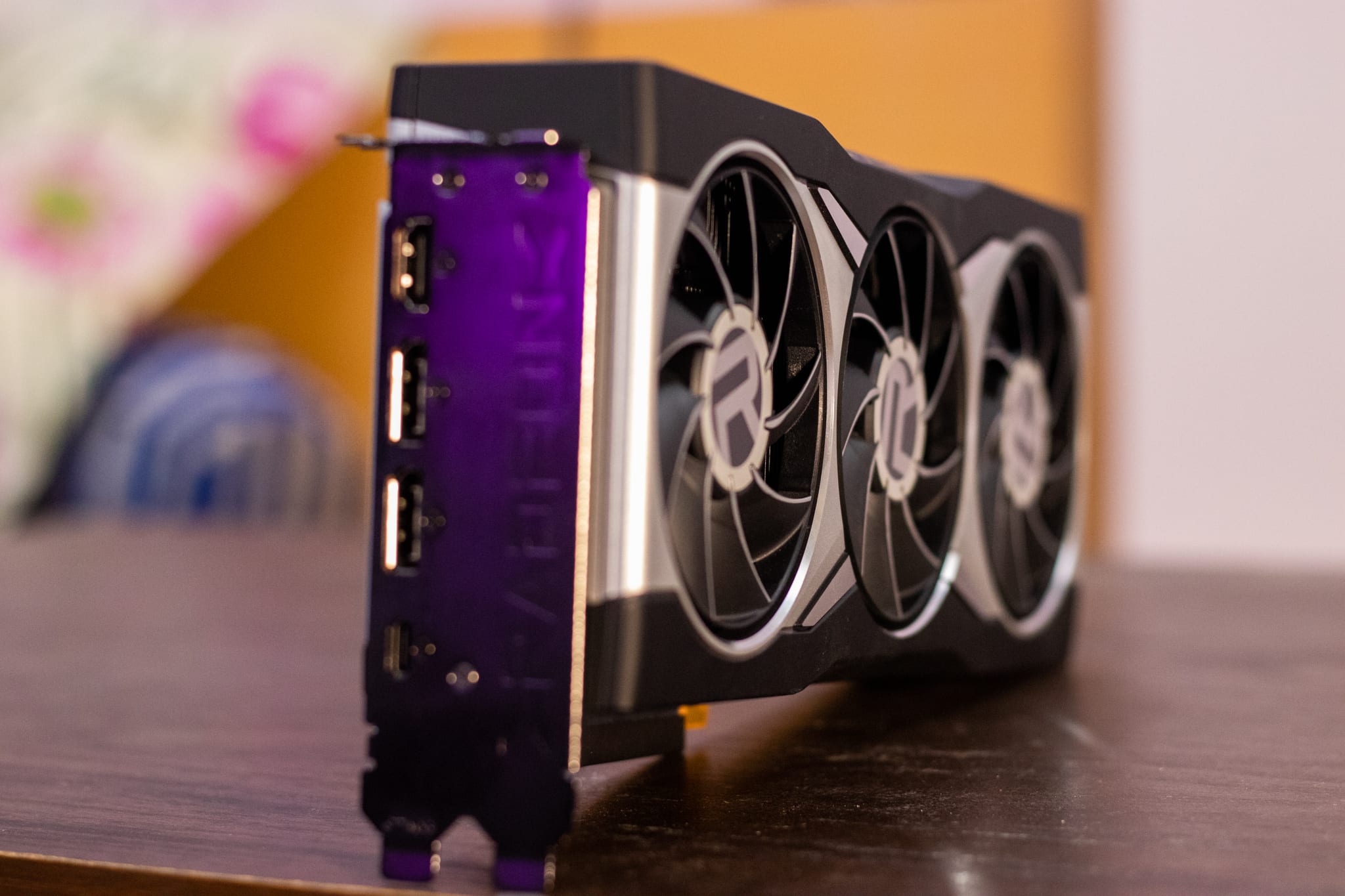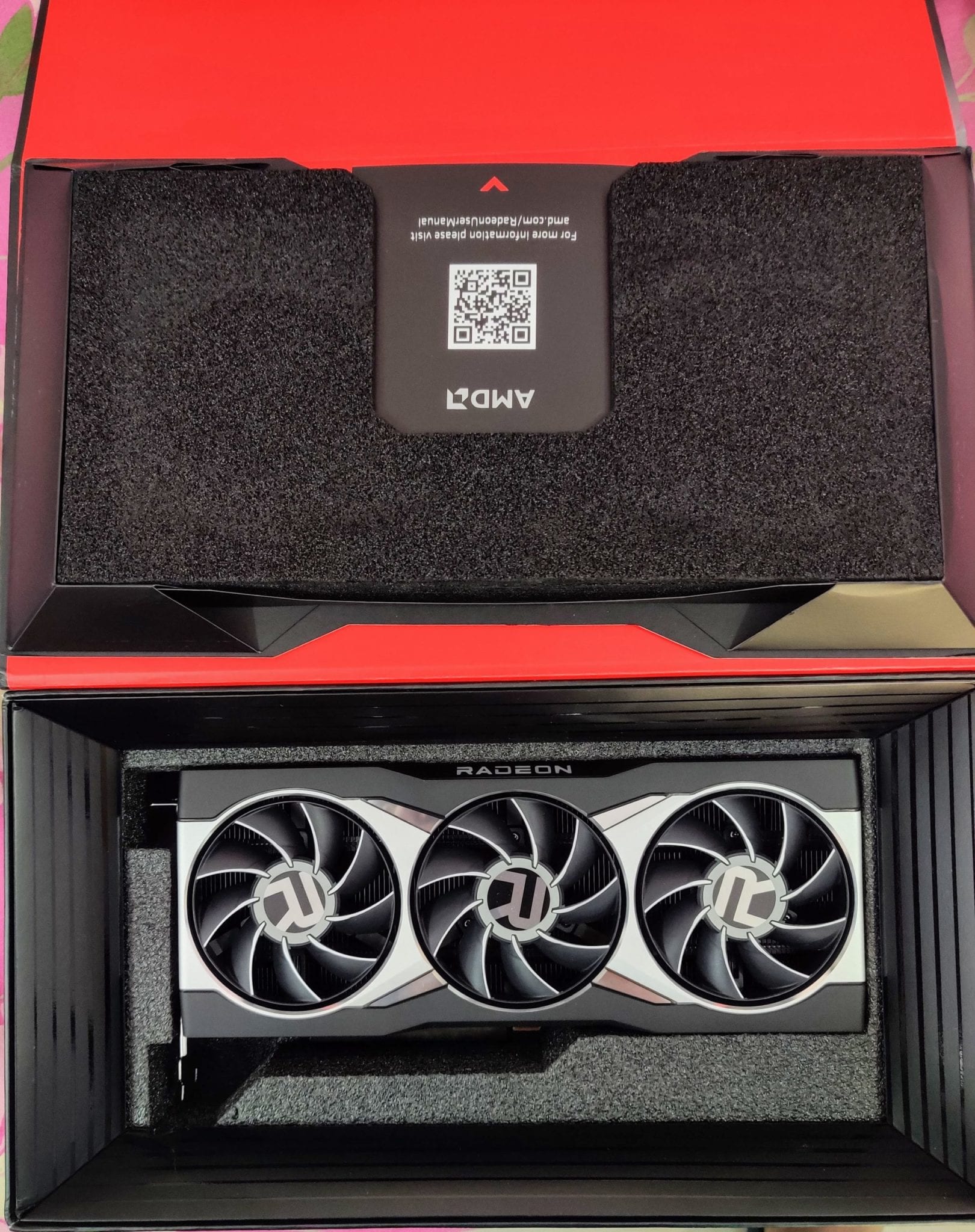Big Navi is finally here, and it has made its debut in big fashion with the Radeon RX 6800 XT, which is AMD’s counter to NVIDIA’s RTX 3080 for enthusiast gamers.
We’ve been testing and playing with the 6800 XT for almost a week now, and I should note a few things before diving deeper into the review. For one, we didn’t have an RTX 3080 to compare the 6800 XT with, hence the benchmark charts today won’t show any comparisons with that. We did source some benchmark data from certain other outlets for the 3080 so we could get a better look at comparative performance. For default settings we kept the GPU in, well, its default preset in the Radeon Adrenaline software. We also got to test Smart Access Memory as well as the much teased “RAGE Mode” together, which AMD claims should give us a variable performance boost in games and other applications.
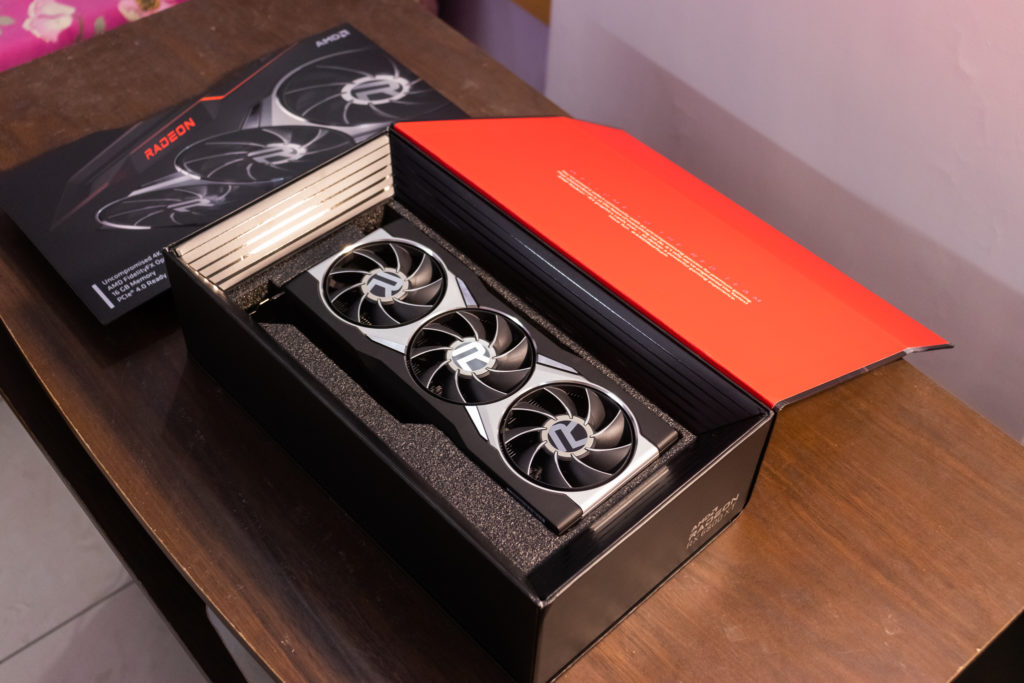
Radeon RX 6800 XT Specs and Pricing:
| Specs | Radeon RX 6800 XT |
| Compute Units | 72 |
| Memory | 16 GB GDDR6 |
| Memory Interface | 256-bit |
| Game Clock | 2015 Mhz |
| Boost Clock | 2250 Mhz |
| Infinity Cache | 128 MB |
| Price | $649/ Rs.64,990 + GST |
AMD Radeon RX 6800 XT Pictures
We’ve already gone over how the card looks and feels in our unboxing coverage, and the message is clear: AMD wants you to know that it is back in the playing field. All 3 cards in the release lineup are being marketed as 4K ready gaming cards, with the 6800 XT sitting comfortably in the middle for gaming at 4K “Ultra” settings. That’s quite a bold claim, but AMD says they’ve surpassed their 50% performance-per-watt improvement over RDNA 1, so it shouldn’t be too much of an issue. We already reviewed the Radeon RX 5700 and 5700 XT back when they came out last year, and those cards gave tough competition to the RTX 2060 Super and 2070 Super. However, both AMD and NVIDIA now have moved on to their next-generation graphics technologies.
For reference, I was using the RTX 2060 Super for my gaming pleasure before using the Radeon RX 6800 XT, and RDNA 2 gives me almost exactly twice the performance of the 2060 Super. This translates to roughly double the performance of the Radeon RX 5700, and that’s quite decent for the extra money you’re paying. Let’s get started then, shall we?
Review Test Bench:
- CPU – AMD Ryzen 7 5800X (reviewed independently here)
- Motherboard – MSI MEG X570 GODLIKE
- Cooler – Deepcool Gammax L240T
- RAM- 16 GB G.Skill TridentZ RGB (3000 MHz)
- Storage – Crucial P1 500GB NVMe PCIe 3.0 M.2 SSD
Radeon RX 6800 XT Gaming Performance
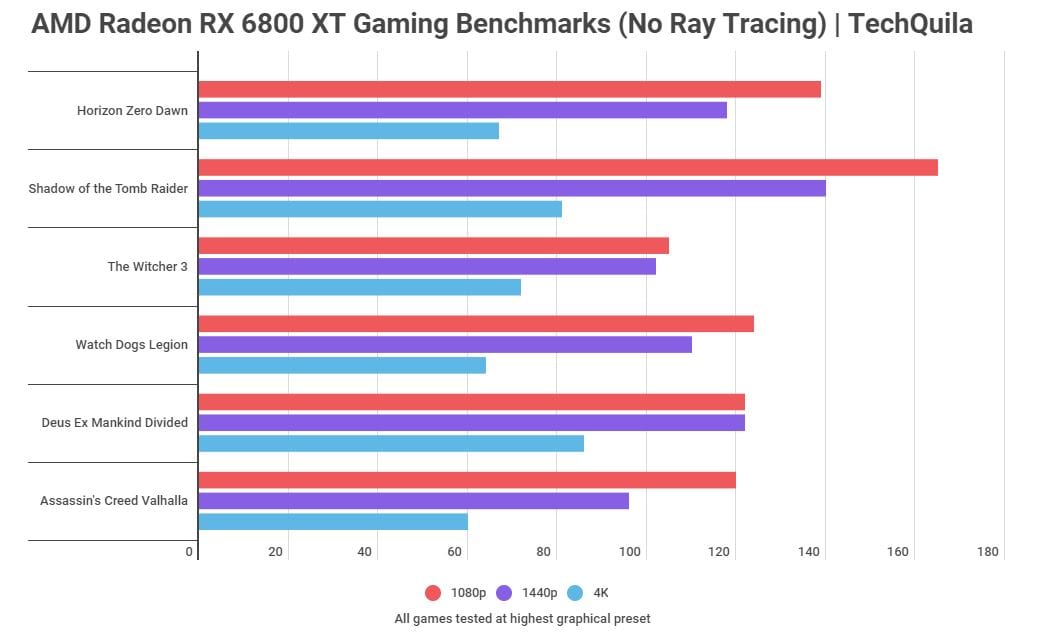
Starting off with raw gaming performance, the RX 6800 XT is no slouch. Note that at 1080p and even to an extent at 1440p, we were getting CPU bound, so some titles didn’t see much performance dip there. For lower resolutions, you can work around the CPU-bound performance with Smart Access Memory, which we examine in a later section in this review.
At 4K and the highest settings, the 6800 XT can push above 60 FPS quite easily, and remember that this is without overclocking, SAM or even Rage Mode enabled. You really can just plug in the card and get the expected performance out of it.
I was surprised to get 60 FPS at 4K in Assassin’s Creed Valhalla, which is quite demanding, to begin with. Of course, it should be noted that Valhalla is an AMD-partnered title.
But seeing as we’re at the forefront of next-gen gaming with the new consoles, I also wanted to see what the ray tracing performance of RDNA 2 is. After all, NVIDIA made bold claims with its ‘RTX On vs Off’ campaign when Turing came out 2 years ago, and AMD didn’t exactly talk much about ray tracing in their briefing either.
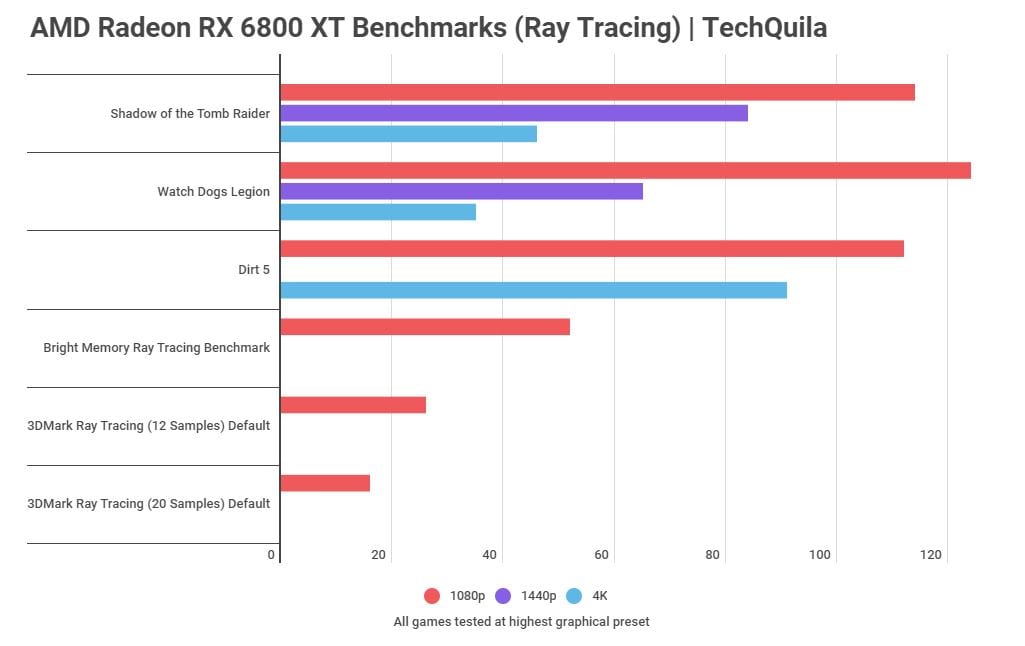
Well, that’s…kinda meh. RDNA 2 supports DXR-based features, but the lack of a performance boosting feature is perplexing. AMD has said that they are working on FidelityFX Super resolution, which is a more open-source alternative to NVIDIA’s proprietary DLSS technology. While the 6800 XT’s hardware-accelerated ray tracing perfomance is fine on its own, we seriously need a DLSS alternative to really play these games at good framerates!
If you’re buying a 4K-marketed gaming graphics card, then you should be able to play games at that resolution with all settings turned on. Sure, you might want to crank certain other settings down, but it’s clear that the hardware just isn’t ready for 4K gaming with ray tracing settings turned on. Now, if you’re looking to get the 6800 XT and play at 1440p, the sure go ahead. You’ll get a smooth experience without any compromises whatsoever.
Radeon RX 6800 XT Synthetic Benchmark Performance
Alright, moving on to synthetic benchmarks with the 3DMark suite, we saw respectable scores trading blows with what the 3080 nets.
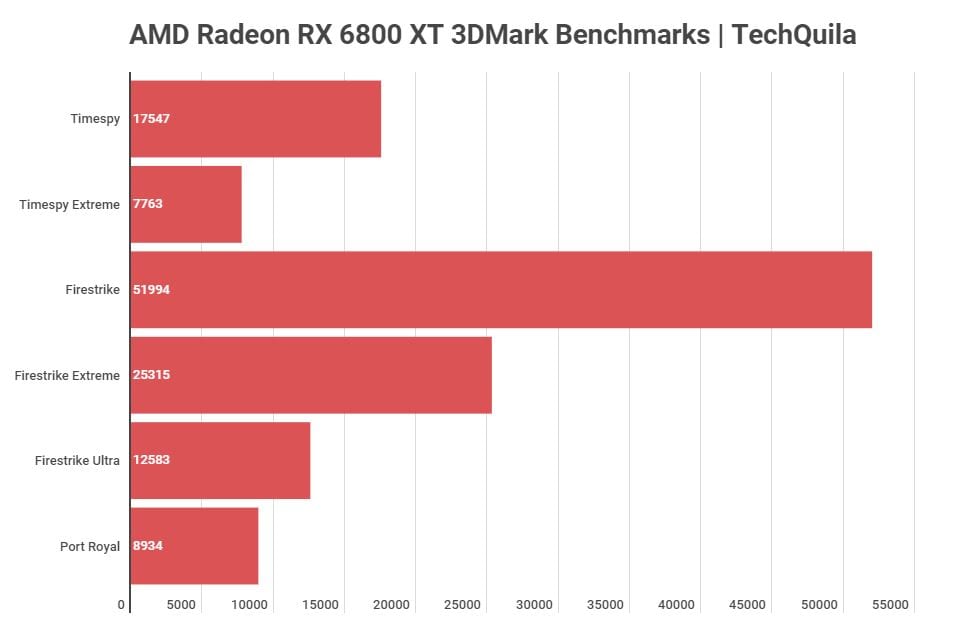
Here’s what we got in Geekbench with both OpenCL and Vulkan compute benchmarks:
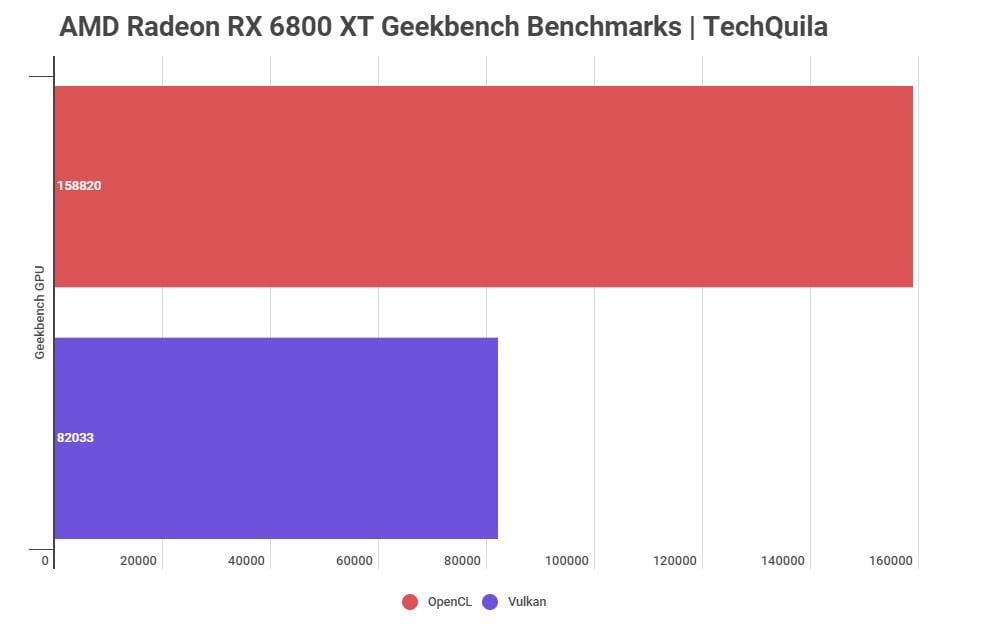
Smart Access Memory + Rage Mode Analysis
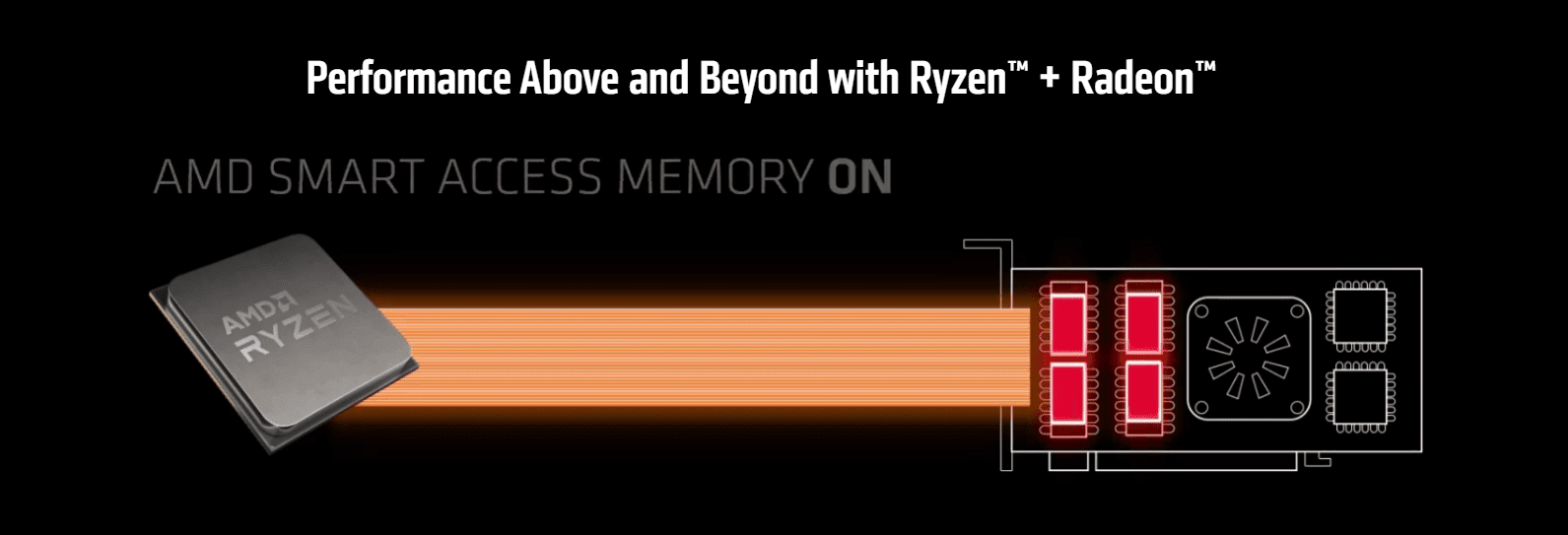
During Big Navi’s initial reveal, AMD also debuted a new feature known as “Smart Access Memory”, with which you can pair the new cards with a Ryzen 5000 CPU to get more performance gains. While the technology itself isn’t exactly proprietary to AMD (NVIDIA is working on bringing it to their GPUs with Intel as well as AMD CPUs), it is the first time we’ve seen something like this. On paper it’s an impressive feature, letting the CPU access all of the memory sitting on the graphics card instead of a small dedicated amount.
AMD claimed that it would offer single-digit per cent performance improvement in games, with very few select games scoring higher. It’s the same case with “RAGE Mode”, a graphics tuning preset for the 6800 XT and 6900 XT found in the Radeon Adrenaline software. When enabled, Rage Mode will raise the power and fan speed limits for sutained higher clock speeds. It’s technically not an overclocking feature and is slightly similar to Precision Boost Overdrive found in the Ryzen CPUs, which also pushes sustained performance as long as temparature and power limit headroom is maintained.
So how does all this stack up in real-world usage then? Well, we turned on both Smart Access Memory as well as Rage Mode for the best results, and here is what we got at 4K Ultra settings:
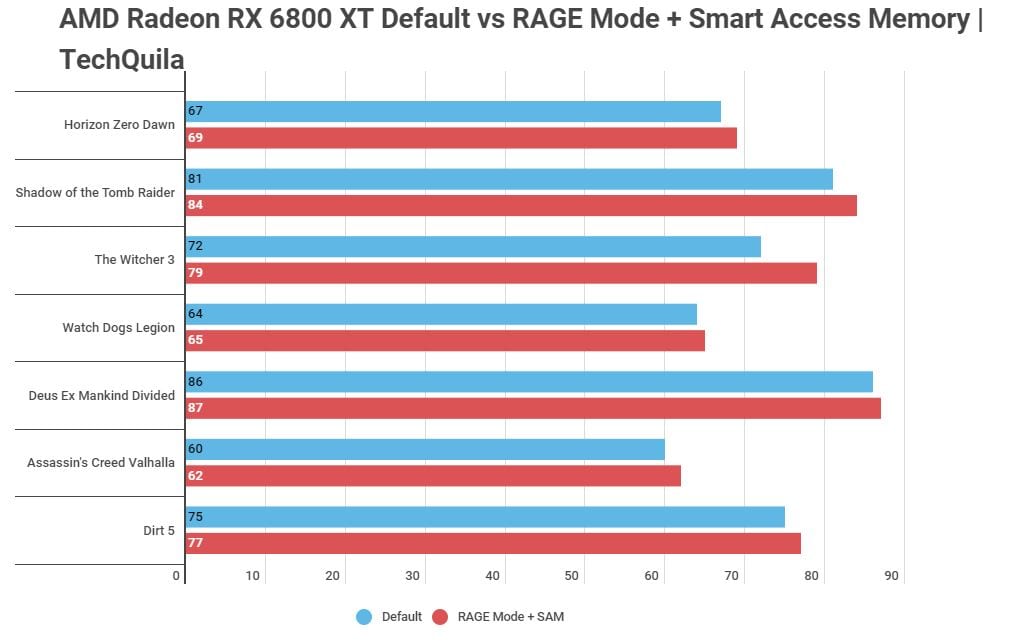
In gaming, performance uplift is negligible, at the cost of higher temperatures. There are no games right now which can really take much advantage of both features right now, so we might have to wait for developers to implement any changes on their end. However, I should also add that SAM really shows performance uplift at lower resolutions and not much at 4K. If you’re content with gaming at 1440p Ultra settings and managed to snag a Ryzen 5000 CPU, then you’re in luck!
Synthetic benchmarks, on the other hand, tell a very different story. From our testing, it’s clear that these benchmarks show the potential of what Rage Mode and SAM can achieve:
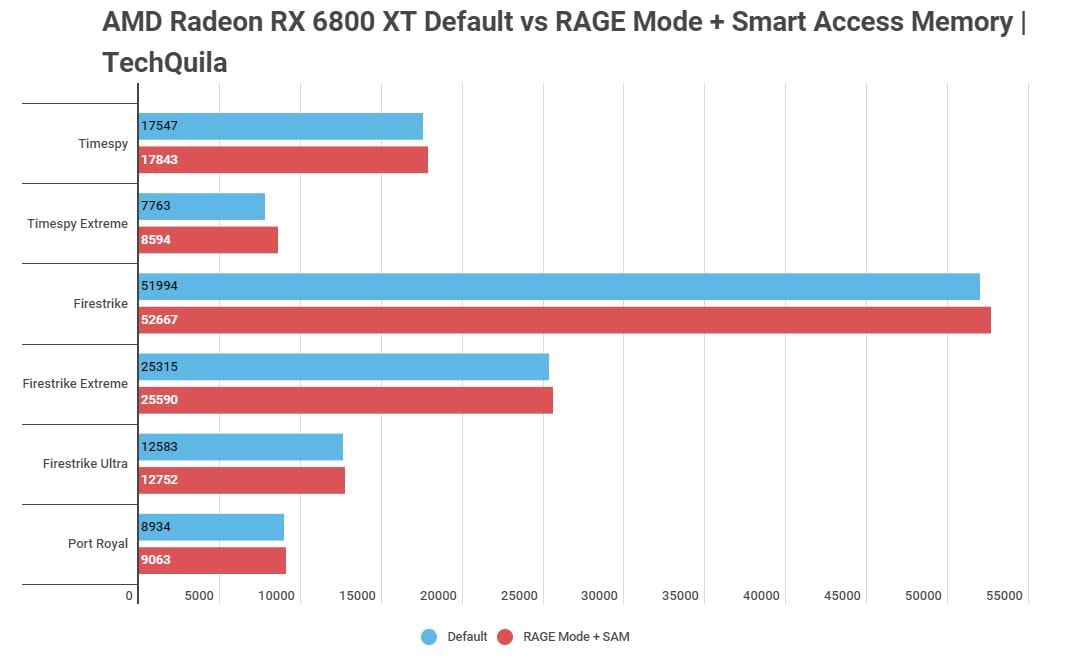
Now, with Rage Mode turned on we did see increased power usage and thus resulting in increased temperatures.
We recommend just using the “Overclock GPU” preset to allow the core frequencies to run higher. In our case, we were able to touch 2.4 GHz!
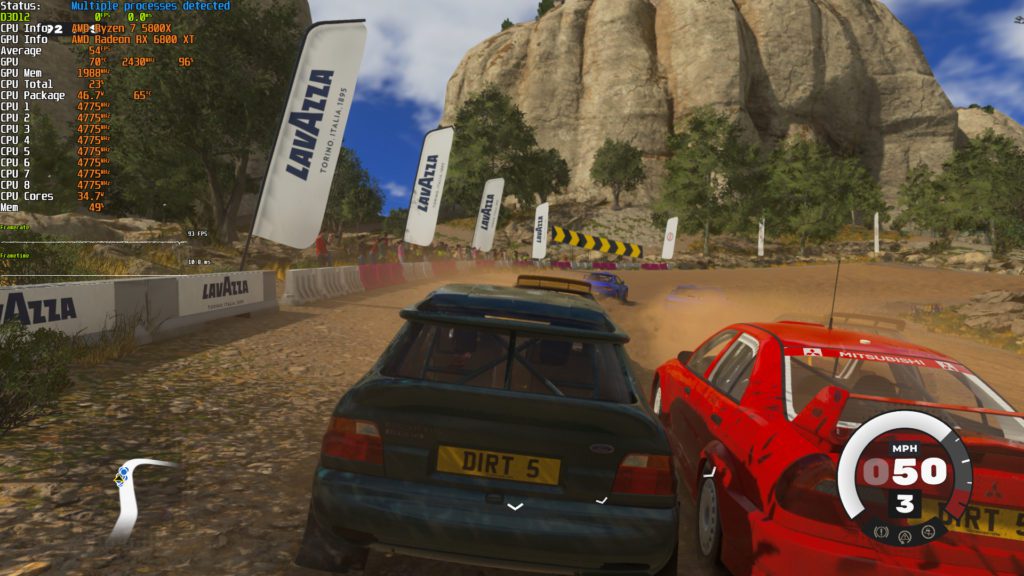
RDNA 2, Like Zen 3, Is Built For Higher Frequencies With Increased Thermal Headroom
AMD says that a junction temperature of up to 110 degrees is “expected and within spec”, so it’s a little similar to RDNA 1, which were designed to run hotter in typical gaming scenarios. Throughout our testing with the RX 6800 XT, we found certain similarities with the Zen 3 CPUs – both RDNA 2 and Zen 3 are designed to run at higher-than-typical clock speeds, and both are designed to handle higher temperatures. Having tested Big Navi now, we now understand the approach taken by console manufacturers in their design, which are using Zen 2 CPUs and RDNA 2 GPUs. Take the PS5 for example – Its 36 CU GPU is clocked at 2.23 GHz, and Sony is using liquid metal for cooling. This makes much more sense now as these components are really built for those higher clock speeds with increased thermal headroom!
AMD FidelityFX Features Tested
The new RDNA 2 architecture also brings with it some new FidelityFX features:
- Variable Rate Shading (VRS)
- FidelityFX LPM (HDR Mapper)
- FidelityFX CAS (Contrast Adaptive Sharpening)
- FidelityFX Downsampler
- FidelityFX Denoiser
- FidelityFX Screen Space Reflections (SSSR)
- FidelityFX Ambient Occlusion (CACAO)
While some of these features work behind the scenes, some we can turn on and off to see the visual and performance differences in supported games. In Godfall, you can turn FidelityFX LPM on or off at any time, and the results are simply stunning! Take a look below:


With FidelityFX LPM turned on, we didn’t really see any performance deficit, and it felt like turning on HDR while using a SDR monitor. I highly recommend turning LPM on in supported games (only Godfall right now), and wish more games get support for it in the future.


We already tested FidelityFX CAS in Resident Evil 3 when we had the Radeon RX 5600 XT, so make sure to check that out! The verdict there was, just like this time, to turn it on and enjoy better visuals without any performance hit!
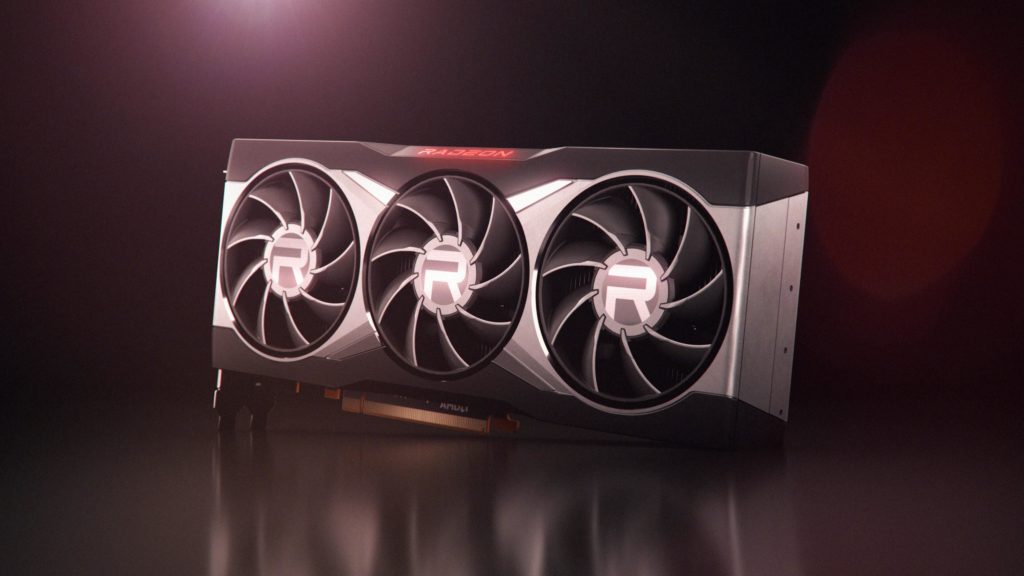
AMD has delivered some competent GPUs here which can go against NVIDIA’s offerings really well. Its improvements over RDNA 1 is quite staggering, but the lack of performance-boosting features with ray tracing turned on is slightly disappointing. We quite like the FidelityFX suite of features, and hope more games add support for those. Smart Access memory and ‘Rage-mode’ don’t bring too much to the table right now, but they’re nice additions for enthusiasts to squeeze that little bit of extra performance out of Big Navi.
For 4K gaming, the Radeon RX 6800 XT is a powerful card which butts heads with the NVIDIA GeForce RTX 3080 well, while costing cheaper. Normal gaming performance can be higher than the RTX 3080 under the right circumstances, but its lack of extra features like NVIDIA Broadcast or even gaming-specific features like DLSS hurt the experience a decent bit. Right now, AMD has priced the Radeon RX 6800 XT well accordingly with its performance, as it sits right below the RTX 3080 when ray tracing is turned on. But, much like AMD’s “FineWine technology” of the past, we might yet see more surprises down the line as FidelityFX Super Resolution and other features become available.
As for pricing and availability, you can check it out on AMD’s official webstore here. The RX 6800 XT will cost Rs.64,990 + GST, while the RX 6800 will cost Rs. 45,999 + GST (around Rs. 54,000).


